Since the first Falcon 9 landed successfully, back in December 2015, there has been constant improvement with how they process the landed first stage boosters. Most of this we can’t see, but there is still a lot we can. This article is about the improvements in booster processing that we, the rocket-stalking public, have seen SpaceX achieve.
Flying Dirty Boosters
The first few reflown boosters were actually washed. This obviously added time to refurbishment and since then SpaceX has been flying dirty boosters. However they can’t skip the booster bath completely and do wash along weld lines for inspection. This creates a grid pattern on the boosters and it gets pretty noticeable after a few flights.
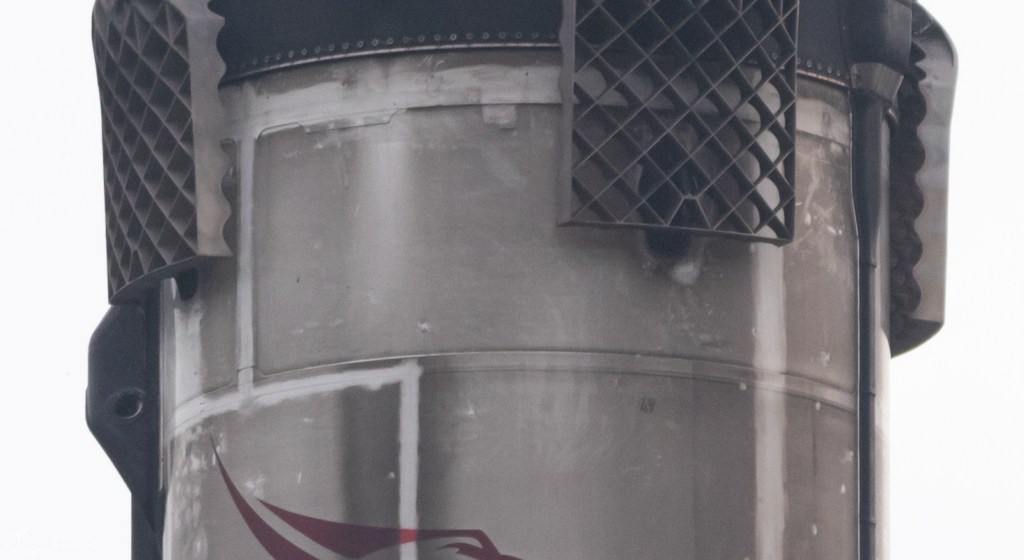
Octagrabber
We didn’t always have the lovable booster grabbing robot known as Octagrabber. Technicians used to board to the droneship and secure the booster with jacks and chains. With the advent of Octagrabber, workers can now secure the booster from the relative comfort of a support ship. Octagrabber doesn’t actually connect to the deck, it just uses its own weight to hold the booster in place. This works because the boosters are already bottom heavy thanks to their nine merlin engines
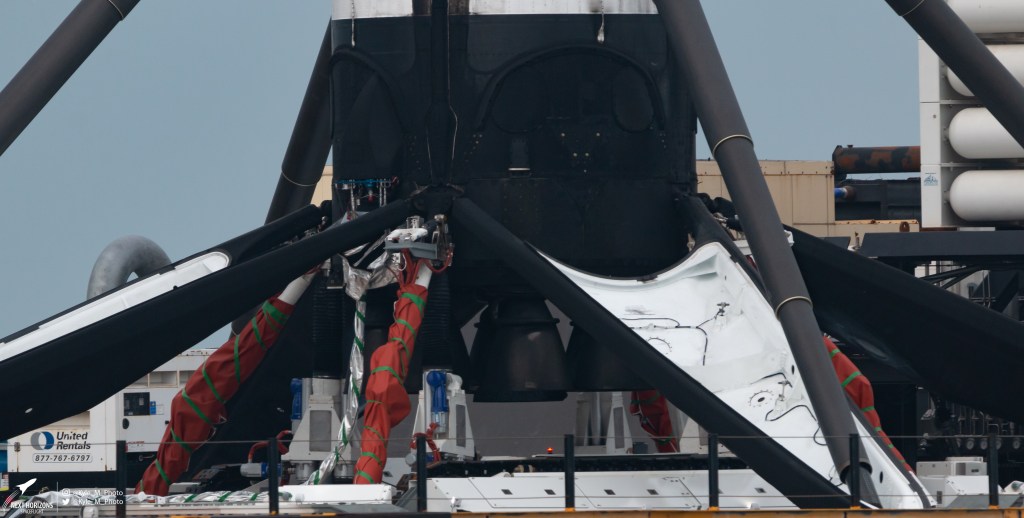
Octagrabber attached to a booster 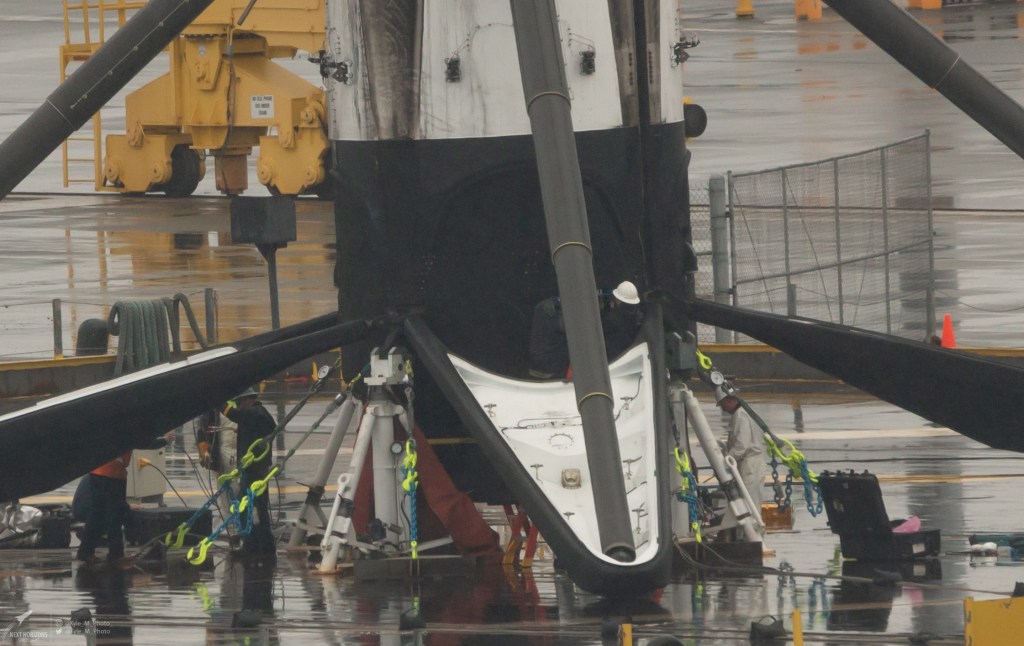
Falcon 9 secured with jacks and chains after a rough landing
Two Droneships
JRTI began its life as a west coast droneship, but in late 2019 it left the west coast and arrived at Port Canaveral. It then spent the beginning of 2020 being refit and upgraded. Droneship landings usually happen pretty far off the coast and it takes a few days for a droneship to get out there or to get back. Two droneships allows them to maintain a much faster launch cadence. Another droneship can head out for a new mission, before the first droneship has even returned.

Retractable Legs
With the Block V upgrade Falcon 9 got retractable legs. Before the design upgrade, every leg had to be removed before the booster could be transported. With the first few Block V boosters they still sometimes removed legs, but nowadays they retract the legs every time. This saves them a lot of time and they also don’t have to transport the legs separately.
Skipping the Stand
Until somewhat recently they always had to lift the booster off the barge and onto the stand before they could retract the legs. While it is not something we see consistently they can now retract the legs while still on the barge, only being supported by Octagrabber. The crane will be used to attach the cap before disconnecting from the booster, the legs are then retracted. Once the legs are all retracted they will reattach the crane and lift it straight off of Octagrabber and the droneship and right onto the transporter without using the stand.
New Crane
In 2019 Port Canaveral bought a new crane. This crane is mostly used by SpaceX to lift the cap onto the booster, to lift the booster off the droneship and onto the stand, and is the main crane that is used for lowering the booster horizontally onto the transporter. The new crane can both lift more and gives them finer control for attaching the cap and for lifting the booster.

Bigger Thrusters
The droneships stay in one place autonomously using their thrusters during the landing. Bigger thrusters allows the droneship to more accurately stay in the correct position, even in more severe weather or with strong currents. This is one of the upgrades made to JRTI when it was moved to the east coast. OCISLY still has smaller thrusters, but will likely be upgraded in the future.
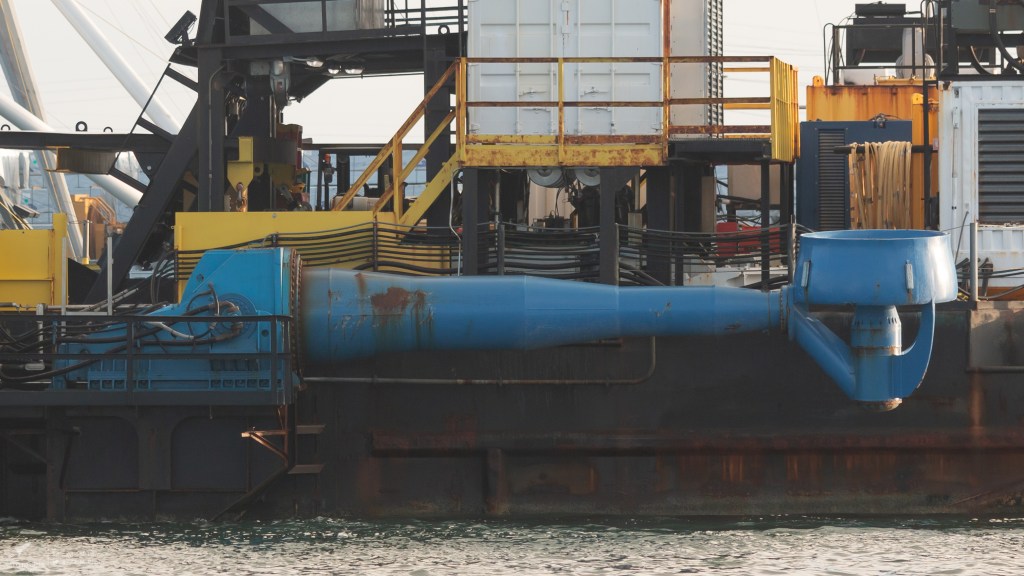
OCISLY’s current thrusters 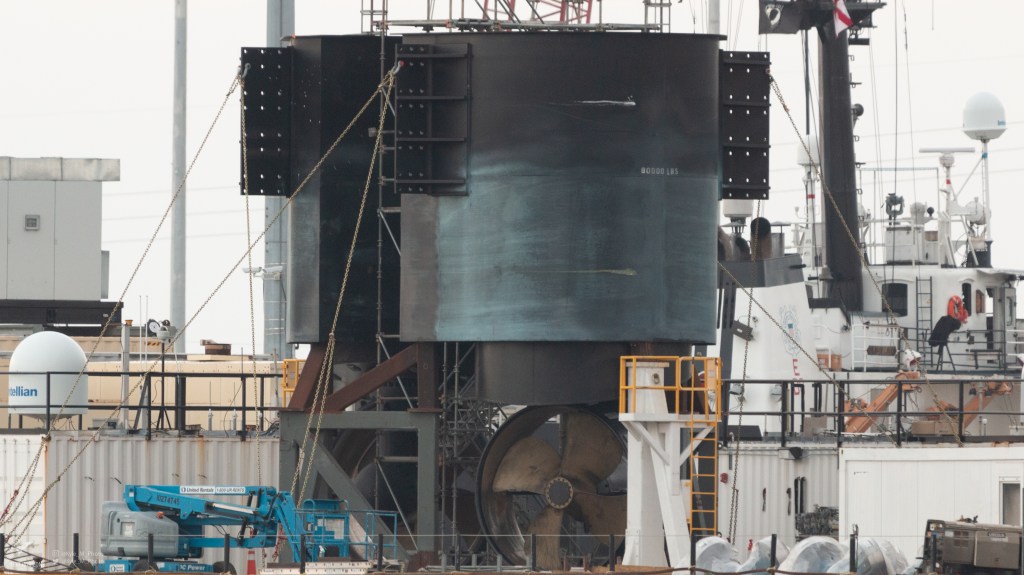
JRTI’s thrusters before they were installed
Crew Transfer from Tugs
When entering port and berthing they need to transfer crew onto the droneship. This job used to be exclusive to GO Quest, but nowadays is more often done by one of the tugs while GO Quest stays out closer to the landing zone waiting for the next droneship to arrive, often going a few missions without returning to Port Canaveral.
Night Entry
With varying launch times, droneship distances, and weather conditions, the droneships don’t always arrive at Port Canaveral during the day. Previously if they arrived at night with a vertical booster they would always wait off the coast until sunrise. This is usually not a big deal, but as launch cadence increases it could become a limiting factor. We don’t know what previously stopped them from entering port at night, but for the first time back in January a vertical booster entered port, in the dark, proving they now are able to enter port at night.
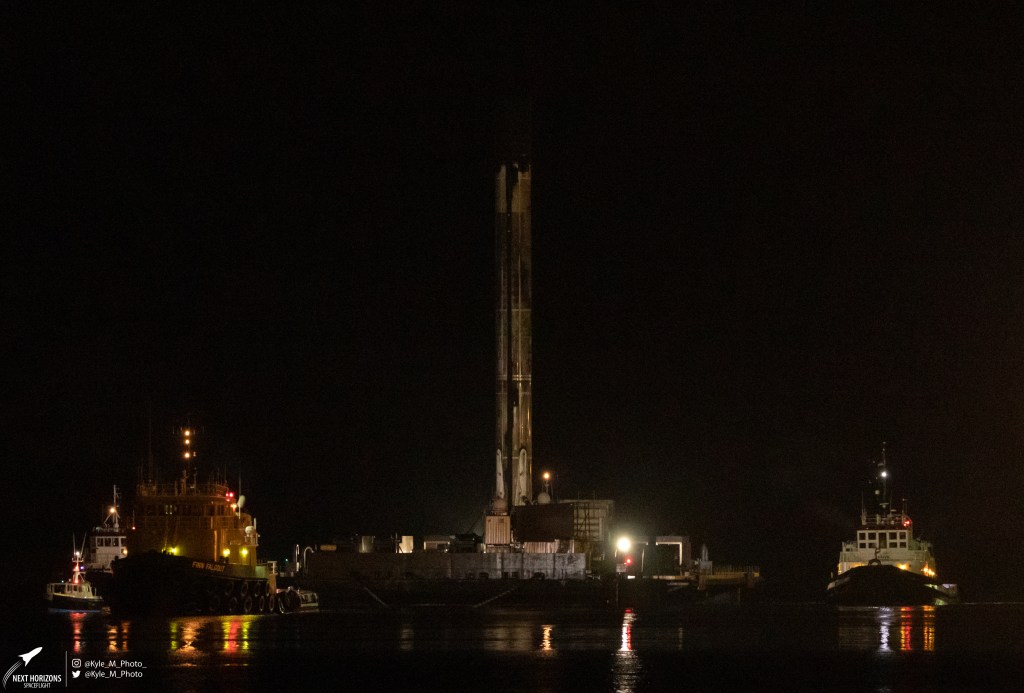
Conclusion
Those are some of the booster improvements we have seen SpaceX achieve. Each improvement moving them closer and closer to the 24 hour turn around goal, set by Elon Musk. If you want to see what SpaceX pulls out of their hat next for booster processing, then consider following me on Twitter. I have been watching and posting about booster processing for over two years now, and I don’t plan on stopping any time soon. Thanks for reading my article, I hope you enjoyed it and maybe even learned something.
